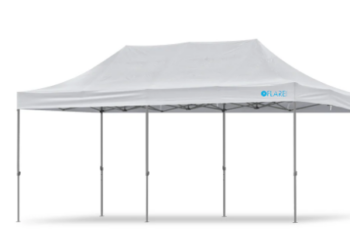Ever heard of enamel? It’s one of the most common materials used in your home and you might not even know about it! There’s enamel in teeth fillings, on furniture, and the lapel pin you wear for work.
Yes, lapel pins use enamel too and that’s not the only significant detail about these fashion accessories. While style trends come and go, lapel pins remain popular.
What are lapel pins and why should you consider investing in them? Discover more about them with our guide below:
The Basics of Lapel Pins
Lapel pins, as the name suggests, are badges that you pin to your shirt’s lapel or collar. Military personnel and politicians wear these often. However, you will also find these as common accessories for people in an organization or those who support a cause.
Most lapel pins have three parts: a metal base, the clutch, and an enamel paint finish. There are variations, which we’ll discuss below.
Origins of Lapel Pins
Where do lapel pins come from? The process of inlaying and enameling goes as far back as 3800 BC, in Ancient Egypt. They didn’t make pins but they started the process that designers would later use.
It wasn’t until the Chinese refined the process that lapel pins became a thing. The first few lapel pins became ornamental accessories. It wasn’t until military uniforms became a tradition that people started using them to designate rank and position.
Lapel pins today go beyond military and political use. If you want to show support for cancer research or the fight against sexual abuse, you can wear a specific lapel pin.
People also use lapel pins today as a fashion statement. With one lapel pin, you can already let people know you love Star Wars or Harry Potter, for example.
Production Process
How do manufacturers make lapel pins? The traditional process requires both machine work and manual labor.
Companies start with a stencil. They’ll use this to make a mold. When the mold finishes, they’ll pour liquid metal alloy to create the pin’s metal base.
Once the base finishes, they can paint and polish the front side. For the back, the manufacturers simply have to attach the clutch/lock to the pin.
Kinds of Lapel Pins
Shopping for lapel pins? You’ll quickly notice they come in many shapes and kinds. Here’s a quick dive into the most common kinds of lapel pins available today:
Soft Enamel Pins
These are the most common types of lapel pins. A lot of lapel pin makers focus on these because they don’t cost much and are quick to produce. You’ll still get a nice enamel finish, providing a bright and beautiful look. You can easily find these pins in different shapes and sizes to accommodate your design. And because they don’t have any metal edges, they’re very safe to wear. Another perk of soft enamel pins is that they are cost-effective, making them the perfect choice if you’re working with a tight budget.
Hard Enamel or Cloisonné Pins
Cloisonné pins rely on a similar process to soft enamel ones. The difference lies with the top layer. Hard enamel pins receive an extra protective coating.
Once the final layer settles and hardens, the makers spend time polishing it. This gives the pin a shiny, jewel-like reflective look. If you’re looking for beautiful gifts for a corporate giveaway or celebration, you can’t go wrong with Cloisonné pins.
Die-Cast Metal Pins
Yes, some pins forego all the enamel colors. These might look a bit basic at first glance, but the beauty lies within the metal used. Many pure metal lapel pins use a strong metal alloy base and then pure gold or silver for the finishing touches.
This makes these pins not only beautiful but also valuable. These lapel pins often go to political leaders, organization members, and as awards to high-ranking military officers.
You’ll also find mass-produce metal lapel pins. These cost less to make because they don’t use gold or silver. The pins used to designate military rank are good examples.
Rubber Pins
There are also rubber lapel pins but these aren’t as common as the other types. The major drawbacks include the fact they break apart easily. However, these don’t cost much and are great lapel pins for kids.
Benefits of Lapel Pins
Why wear lapel pins? They seem so small and insignificant yet a lot of companies and the military invest a lot into them. It all starts with their profound and formal appeal:
Formal Look
People often view lapel pins as a signature look in men’s fashion. That said, there are a lot of style tips and you can find women wearing them now too.
Traditionally, lapel pins are for people wearing formal suits and military uniforms. Pins designate a rank or position, such as the lapel pin worn by the President, soldiers, or members of a company’s board of directors.
Show Support
There are a lot of social movements today. Some of the most popular ones include the Me Too movement, Free Britney, and the struggle against racial inequality.
One good way to let people know you support a cause is to wear an accompanying lapel pin. Once people see it, they’ll automatically know you support that movement.
Sends a Message
Lapel pins can also be a beacon without the need for loud voices. Once you see a soldier with a lapel pin bearing two silver bars, you know it’s an officer. If you see someone wearing one with an American flag, it’s like a politician or someone on a politician’s staff.
Custom Products
Given the flexibility of lapel pins, you should consider making some too. You could use these as corporate giveaways, rewards for employees, or promotional materials.
Fortunately, you don’t need to make lapel pins yourself. There are services out there to make them for you, like these Metal Promo lapel pins.
Take Advantage of These Lapel Style Trends
Now you know all about lapel pins and their style trends. The story behind their creation and how people use them today is remarkable. Don’t forget that they hold significant power for marketing and business purposes too!
Did you like this post about lapel pins? If you are looking for even more informative and entertaining tidbits like these, we invite you to read our other lists and articles. We tackle topics about business, technology, and advertising too!







